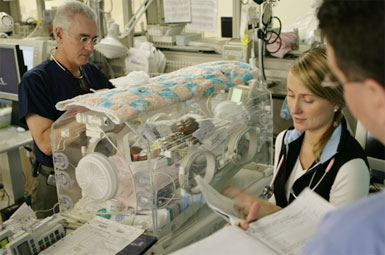Further validation of the UK-derived Luscombe weight formula has been made in the Australian setting. The nice simple formula for estimating the weight of a child based on age is:
Weight (kg) = 3 x age(years) + 7
It was compared with other formulae including the Best Guess formula, which is a bit more difficult to apply as the formula varies according to age range. This is reported in a previous post.
The authors provide the following cautionary advice:
“Whereas age-based formulae are, in the main, easy to calculate, the evidence suggests that ethnicity and body habitus pose serious challenges to their accuracy. In comparative studies, age-based formulae were found to be less accurate than the Broselow tape and parental estimate, with parental estimate being the most accurate weight estimation method. In light of this evidence, age-based formulae should only be used when these more accurate methods are not available.”
OBJECTIVE: Several paediatric weight estimation methods have been described for use when direct weight measurement is not possible. A new age-based weight estimation method has recently been proposed. The Luscombe formula, applicable to children aged 1-10 years, is calculated as (3 × age in years) + 7. Our objective was to externally validate this formula using an existing database.
METHOD: Secondary analysis of a prospective observational cohort study. Data collected included height, age, ethnicity and measured weight. The outcome of interest was agreement between estimated weight using the Luscombe formula and measured weight. Secondary outcome was comparison with performance of Argall, APLS and Best Guess formulae. Accuracy of weight estimation methods was compared using mean difference (bias), 95% limits of agreement, root mean square error and proportion with agreement within 10%.
RESULTS: Four hundred and ten children were studied. Median age was 4 years; 54.4% were boys. Mean body mass index was 17 kg/m(2) and mean measured weight was 21.2 kg. The Luscombe formula had a mean difference of 0.66 kg (95% limits of agreement -9.9 to +11.3 kg; root mean square error of 5.44 kg). 45.4% of estimates were within 10% of measured weight. The Best Guess and Luscombe formulae performed better than Argall or APLS formulae.
CONCLUSION: The Luscombe formula is among the more accurate age-based weight estimation formulae. When more accurate methods (e.g. parental estimation or the Broselow tape) are not available, it is an acceptable option for estimating children’s weight.
Validation of the Luscombe weight formula for estimating children’s weight
Emerg Med Australas 2011 Feb;23(1):59-62











